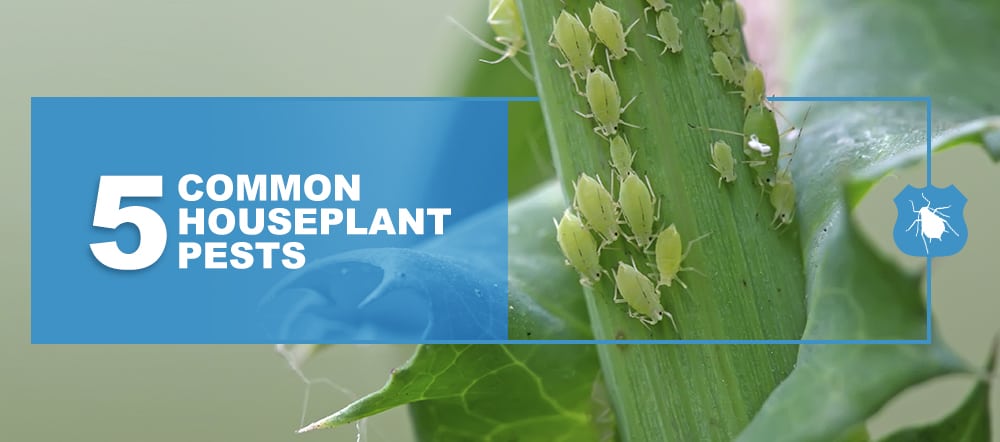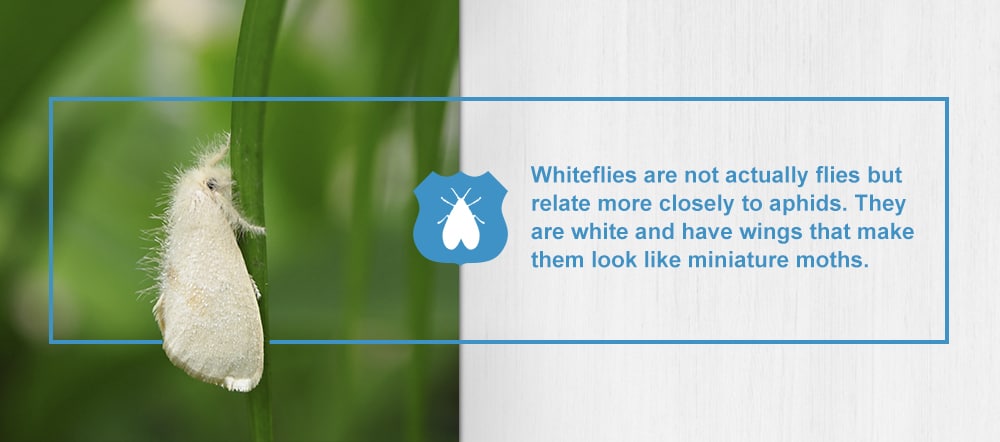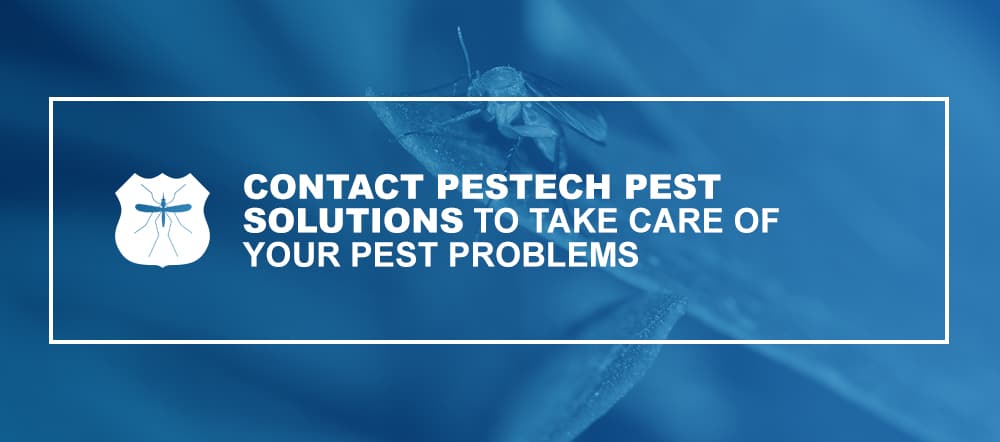5 Common Houseplant Pests

Bringing a plant indoors can bring pests along with it into your home. In other cases, your houseplants might naturally attract pests. In either situation, it’s important to address a pest issue early before it grows into an infestation. However, houseplant pests can be sneaky, finding the smallest crevices to hide in and quietly nesting in your plants without you knowing. By the time you notice bugs on houseplant leaves, it may be too late.
To catch houseplant pests before they turn into a problem, you need to know the early warnings. This article will help you recognize the telltale signs of a potential infestation and figure out what to do if you spot them on your plants.
Here are five common indoor plant bugs to be on the lookout for:
- Aphids
- Spider Mites
- Whiteflies
- Mealybugs
- Fungus Gnats
1. Aphids
As one of the most common houseplant pests, aphids are small, soft-bodied insects. They are typically green, but they can also be brown, black, yellow or pink. Aphids are harmful to plants because they love to suck up their sap, which strips the plants of their nutrients. Here’s some more information on these critters, including what to do if you see these bugs on your indoor plants:
- Houseplants they love: Aphids are attracted to most plants and crops, especially young plants.
- Signs to look for: Because aphids feed on sap, look for yellowing and misshapen leaves, stunted growth or deformed buds. Aphids also excrete a shiny, sticky, sugary material called honeydew.
- How to get rid of them: Aphids are soft enough to be crushed with your fingers. However, spraying the infested houseplant with a hose on full power will knock the aphids out of the leaves and will prove far more effective. For stronger infestations, use insecticidal soap spray, pyrethrins or neem oil extract. Consider using natural predators of aphids, such as green lacewings and ladybugs.
2. Spider Mites
Closely related to spiders, spider mites are tiny indoor plant mites that produce silky webs. Like aphids, spider mites suck plant sap, which can severely damage houseplants. Spider mites are especially dreaded houseplant pests because they are immensely difficult to get rid of. For this reason, it’s important to take action quickly if you notice any tiny black bugs on plants in your home:
- Houseplants they love: Spider mites like most houseplants, including ornamental flowers and crops like tomatoes and strawberries.
- Signs to look for: Spider mites are so small that they’re usually invisible to the naked eye. Instead, look for webbing, reddish or yellowed leaves and speckling on the plant’s leaves to know whether your plant has a spider mite problem.
- How to get rid of them: Vigorously spray the plant with water to drive the spider mites out of the greenery and destroy their webs. Pay special attention to the underside of the leaves as you do so. Be sure to keep the infested plant in a humid environment, which spider mites hate, and regularly spray the plant with insecticidal soap or a botanical insecticide.
3. Whiteflies

Whiteflies are not actually flies, but relate more closely to aphids. They are white and have wings that make them look like miniature moths. Like their aphid relatives, whiteflies feast on plant sap and exude honeydew. To remove them from your indoor plants, check out the information below:
- Houseplants they love: Whiteflies prefer ornamentals and warm-weather plants like potatoes, peppers and tomatoes.
- Signs to look for: Yellowing and dying leaves can indicate the presence of whiteflies. Keep an eye out for honeydew and the sooty mold fungi this excretion can cause as well.
- How to get rid of them: The color yellow attracts whiteflies, so hang yellow sticky traps near your plants to catch them. Spray your plant with water and insecticidal soap. Placing imidacloprid plant spikes — a type of insecticide — into the soil will also decrease the number of whiteflies in your house.
4. Mealybugs
Known for their white coloring, mealybugs produce a waxy secretion that makes them look almost like small pieces of cotton. This waxy secretion also protects them from pesticides, making mealybugs especially hard to get rid of. Mealybugs excrete honeydew and eat sap like an aphid. They are slow-moving but quick-breeding, so it’s crucial to address a mealybug problem as quickly as possible:
- Houseplants they love: Soft-stemmed plants, succulents, rosemary and citrus are mealybug favorites.
- Signs to look for: Although mealybugs’ white bodies are easy to see, they like to hide in ornamental flower petals and under their leaves so you can’t find them. Check your houseplants for stunted and distorted growth or look for honeydew as warnings of a potential mealybug problem.
- How to get rid of them: Isopropyl alcohol will kill mealybugs on contact — dab the alcohol onto infested plants. You can also release a type of ladybird insect known as the “mealybug destroyer” onto your houseplants to control the mealybug population.
5. Fungus Gnats
Although fungus gnats have wings, they are weak fliers and are most often spotted flying close to the soil’s surface or running across it. Adult gnats are a nuisance to people, but fungus gnats’ larvae are what’s really harmful to plants. The larvae will feed on the soil’s fungi and plant roots, which can damage the plant’s health. Here’s more information on these buzzing insects:
- Houseplants they love: Any houseplant that you overwater can become a fungus gnat’s new home because the soil fungus they feast on only grows in moist conditions.
- Signs to look for: Plants battling a fungus gnat infestation often lose their leaves. In the early stages of a fungus gnat issue, the houseplant’s normal and healthy appearance will decline.
- How to get rid of them: Spread some bacillus thuringiensis (BT) on your houseplant’s soil as a safe, natural pesticide to eliminate tiny bugs in houseplant soil like fungus gnat larvae. To catch the adult fungus gnats, hang yellow sticky traps near your plants. You can also use other houseplant varieties to drive gnats away.
Contact Pestech Pest Solutions to Take Care of Your Pest Problems

Home remedies don’t always work to get rid of houseplant pests. If your pest problem takes a turn for the worse, contact Pestech Pest Solutions before the infestation becomes severe.
Pestech Pest Solutions is the largest pest management center in New York — we’re available to tackle pest problems anywhere, including Orange County, Dutchess County and throughout NY. Our residential pest management services are well-equipped to guard your home against unwanted critters and protect your houseplants.
As a family-owned company, we treat your home like our own when helping you address pest issues. We use environmentally friendly materials when correcting an infestation to ensure the least environmental impact on both your home and the state of New York.
If you’re facing a houseplant infestation, help is only a phone call away. To schedule a home inspection with Pestech Pest Solutions, call 800-287-BUGS today.
